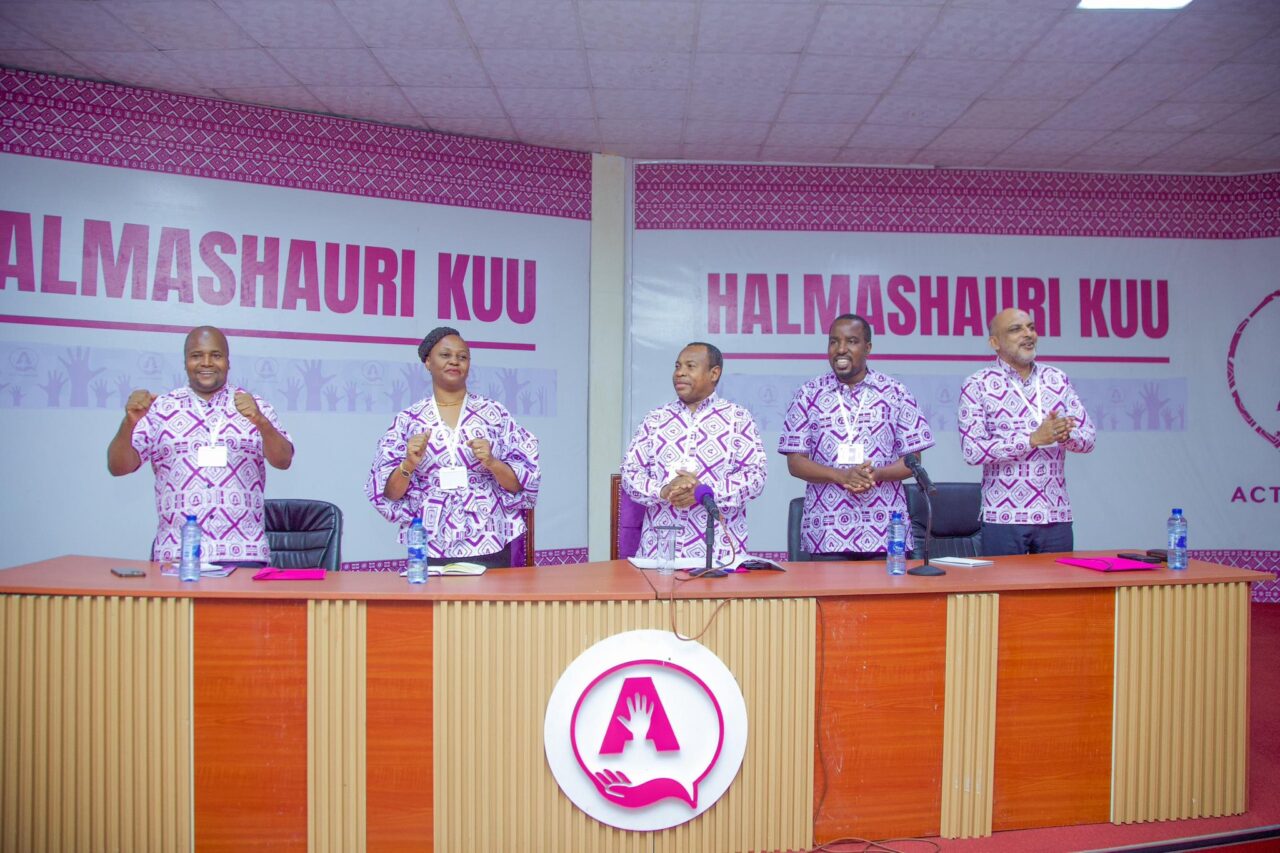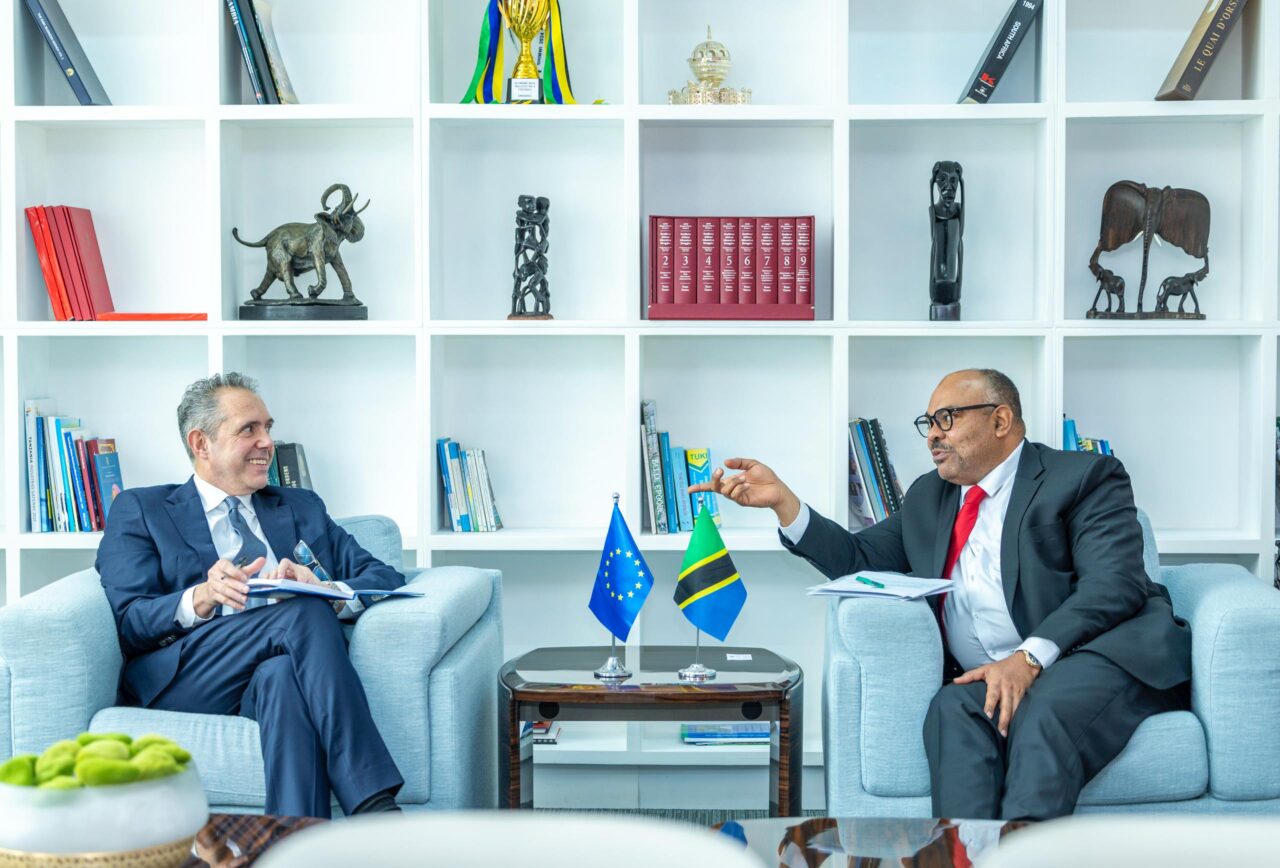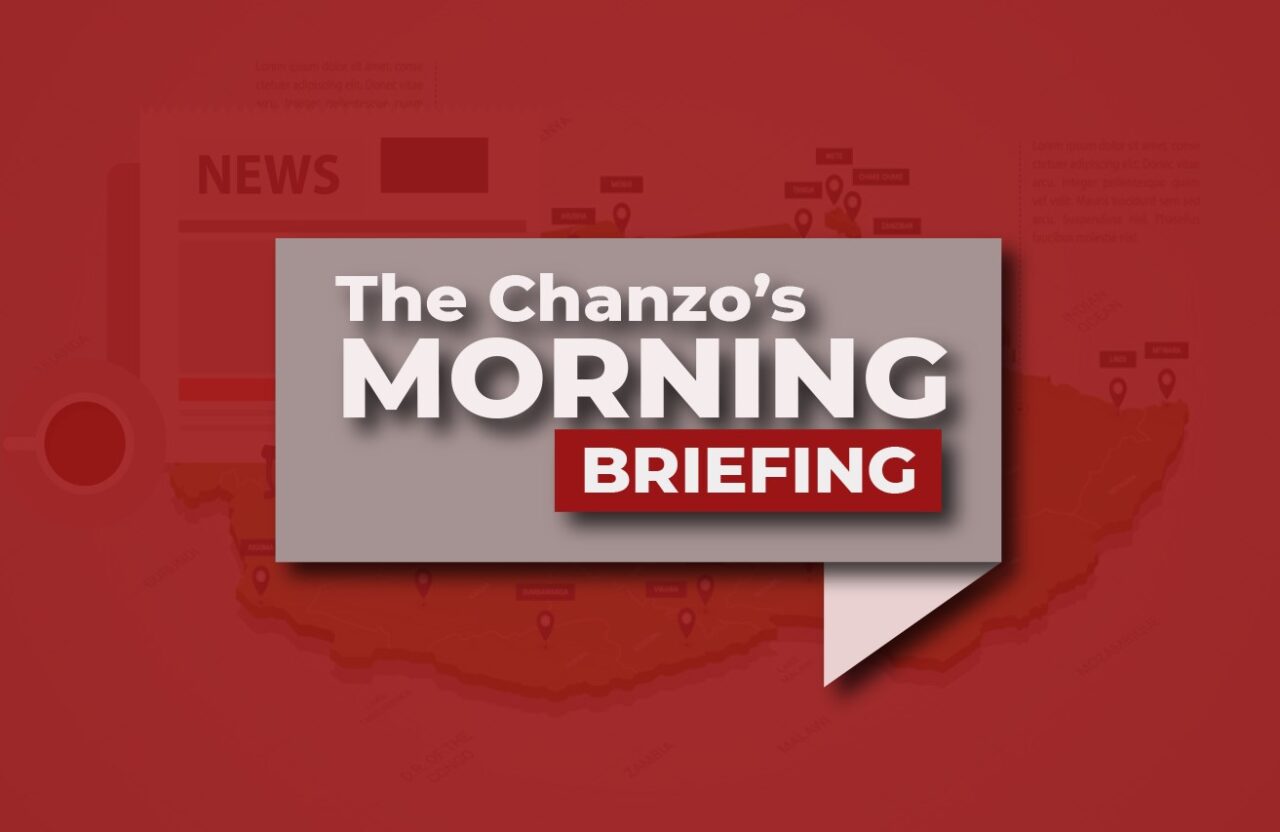The imminent threat of climate change to human existence cannot be overemphasised. Climate change and its impacts deeply undermine progress toward sustainable development, especially in the developing world.
Indeed, major economic sectors, such as agriculture and livelihood, are deteriorating in Africa due to long-term shifts in elements of weather patterns, such as rainfall, temperature, and relative humidity. This increases disasters such as floods, droughts, and other natural hazards. Evidence of this trend can be observed in the report released by the Tanzania Meteorological Agency between 2020 and 2023.
Recognising this clear and present danger, the United Nations established the United Nations Framework Convention on Climate Change (UNFCCC), which has since enjoyed a near-universal endorsement with its 198-country membership. The treaty constitutes a global response to climate change.
This treaty birthed the Paris Agreement, whose 196-country community adopted a legally binding international treaty on climate change in December 2015 in the now famed Paris Agreement.
The treaty, which came into force in November 2016, requires that the increase in the global average temperatures be kept below 2°Celcius above pre-industrial levels and global temperatures be limited to a 1.5°C increase above pre-industrial.
Nevertheless, achieving the Paris Agreement, which requires actionable climate adaptation, mitigation, and resilience strategies, will not come cheap. Estimates show that global investments required to achieve the agreement’s goals range from US$3 to US$6 trillion annually until 2030. (OECD, World Bank and UN Environment, 2018).
The report published by OXFAM in 2023 shows that the current global climate funding only amounts to around US$630 billion annually, with debt being the primary source of financing for these investments. This reality, therefore, calls for countries, particularly developing ones such as Tanzania, to mobilise resources domestically.
Domestic revenue mobilisation
It must be noted that if well executed, Domestic Revenue Mobilization (DRM) can further attract international climate financing as it can demonstrate the country’s commitment to climate change action and its capacity to use corresponding funds effectively.
This interplay between DRM and climate financing can thus create a virtuous cycle, where countries with sound DRM systems attract additional climate finance, leading to greater climate action and sustainable development.
READ MORE: The Nairobi Declaration on Climate Change: Some Take-home Message for Tanzania
Extractive companies are among the worst polluting industries globally. Indeed, the combination of extraction and processing of natural resources is responsible for almost half of the total global greenhouse gas (GHG) emissions.
Extractive operations exacerbate climate change as some products, such as petroleum and coal, are not only fossil fuels that cause high levels of greenhouse gas emissions but also do so through deforestation, marginal land opening and water pollution during production processes.
Interestingly, some extractive resources such as copper, cobalt, lithium, aluminium, and nickel are critical to facilitating the transition towards renewable energy technologies. Moreover, if well managed, revenues from the sector can be used to finance climate change mitigation, adaptation, and resilience strategies.
It should be noted from the onset that payments from the industry are subject to illicit financial flows (IFFs), which must be dealt with if revenues from the extractive sector must be maximised.
A report published by Policy Forum on how DRM in the Extractive Sector can finance climate change shows that Tanzania is currently experiencing adverse climate change impacts. Recent climate variability and change have resulted in extreme weather events and high economic costs in the country. Specifically, climate change poses monetary charges estimated at around one per cent of Tanzania’s GDP.
Furthermore, the net financial cost of addressing climate change impacts in Tanzania is estimated to be equivalent to one to two per cent of GDP per year.
Tanzania has undertaken various efforts towards addressing climate change through national frameworks such as the Nationally Determined Contributions (NDCs) and the National Climate Change Strategy (2012) to cut emissions and adapt to climate impacts.
READ MORE: Stakeholders Gather in Arusha to Demand Accountability on Climate Action
Note that NDCs entail actions and plans designed by individual countries to cut emissions and adapt to climate impacts. Based on NDC submissions, Tanzania has the second highest share (41 per cent) of quantitative needs for mitigation in the East African Community, just behind South Sudan at 47 per cent.
Extractive sector’s role
Tanzania’s extractive sector has a significant role in sourcing and supplying minerals required for clean energy technologies and other sustainable solutions. Moreover, with substantial deposits of green minerals and newly discovered natural gas, (re)designing the country’s fiscal regime is essential to mobilise domestic resources from the extractive sector to finance Tanzania’s NDC.
This is because while gas is a cleaner energy source, green minerals are at the centre of green technologies, such as nickel-based batteries used in electric vehicles. However, discussions around DRM cannot be complete without zeroing in on potential leakages that may exist.
DRM has been a popular global development agenda across all levels and sectors. However, in the context of financing climate action, the demand and supply for financing mitigation, adaptation, and resilience is usually disequilibrium.
Indeed, while the demand is high, the latter is limited and unpredictable. This is partly because foreign funding to most African countries is generally dipping and has increasingly become unpredictable.
DRM is inevitable to enable African countries to finance their climate actions and ensure sustainable development. Moreover, DRM can also be an effective tool to attract foreign resources for climate action.
As stated previously, stability in domestic resource mobilisation can signal that a country has macroeconomic fundamentals, which usually attract more resources in the form of loans or grants. Mobilisation of such resources should be comprehensive, focusing on tax and non-tax revenues, including remittances paid by public corporations. This study focuses on fiscal options available for DRM in Tanzania.
READ MORE: Experts Want Illicit Financial Flows Curbed to Ramp Up Domestic Climate Financing
Revenues in Tanzania are primarily generated through the administration of various taxes. They include income taxes, corporate taxes, sales taxes, and other forms of levies imposed on individuals and businesses.
Additional fiscal revenues include fees, fines, and royalties. Various factors, including economic conditions, tax policies, demographic changes, and government spending, influence the dynamics and trends of fiscal revenue.
Increase in domestic revenues
Tanzania has seen a significant increase in domestic revenues over the past decade. Specifically, domestic revenues grew from 59 per cent to 87.8 per cent of the total government revenues from 2009/10 to 2019/20 financial years.
However, the momentum was derailed by the COVID-19 pandemic, with the DRM percentage contribution dropping to 68 per cent in 2020/2021 even though the corresponding total revenue also dipped.
One of Tanzania’s macroeconomic targets for 2023/24 is to increase the real GDP growth rate to 5.2 per cent in 2023. To achieve this, the government aims at increasing fiscal revenues as a percentage of the GDP. However, there is a concern that increases in DRM may be affected by the debt situation in the country.
While the revenues have generally increased, the corresponding debt servicing and its ratio to GDP are slightly decreasing, implying that the debt situation in Tanzania is still sustainable.
Tanzania is one of the few African economies that emerged strongly from the effects of the COVID-19 pandemic. According to the World Bank (2023), the country’s economy grew by 4.6 per cent in 2022 and 5.1 per cent in 2023. According to the National Bureau of Statistics (2022), around 40 per cent of the economy comprises primary activities, including mining, oil, and gas.
READ MORE: African Women Demand Africa Climate Week: ‘We Refuse to Be Tokenised’
The government of Tanzania has streamlined laws to increase revenues generated domestically from the extractive sector. The sector is governed by an elaborate policy and regulatory framework including, but not limited to, all tax-related, investment, and sectoral laws and policies. These include the Mining Policy 2009, the Mining Act CAP 123, and the Petroleum Act 2015.
In 2017, the government passed miscellaneous amendments to the Mining Act of 2010 to enable the government to maximise revenues from the mining subsector, among other reasons. Likewise, the enactment of the Oil and Gas (Upstream) Act, No.6 of 2016 and the Petroleum Agreement (Model Production Sharing Agreement) of 2017 explains how the Oil and Gas resources are envisioned to be managed and accounted for, along with how the subsequent earnings are to be utilised.
Meanwhile, the Tanzania Extractive Industry (Transparency and Accountability) Act of 2015 empowers the government to establish a committee to ensure transparency and accountability in extractive industries.
The Oil and Gas Revenue Management Act governs the use of resources obtained from the petroleum sector and establishes the management of the Oil and Gas Fund. The act has been designed to provide the framework for fiscal rules and management of oil and gas revenues and to provide for other related matters.
The amendments aimed to increase government control and benefit to its extractive wealth and significantly changed Tanzania’s extractive fiscal regime.
Financing climate action
The extractive sector has a responsibility to finance climate action. This obligation results from the industry’s enormous carbon footprint, its ability to spur innovation, and the shift to greener technologies. By actively participating in climate financing, the extractive sector can directly provide funds to help efforts for carbon capture, sustainable business practices, and renewable energy.
The best possible way the extractive sector could fund climate action is through carbon taxation. A carbon tax is a desirable policy because it can boost economic recovery by enhancing DRM and discouraging the consumption of carbon-intensive products, thereby protecting the environment. According to the African Tax Administration Forum (2023), carbon pricing can lower the cost of climate change mitigation by up to 32 per cent by 2030.
READ MORE: Extractive Industries Conference Concludes in Tanzania With Calls for Just Energy Transition
Curbing emissions is essential because evidence points to Africa being the continent worst hit by climate change effects. Its economy still depends on a favourable climate to boost some vital economic sectors, such as agriculture, which is still the biggest employer on the continent.
The situation is made worse by the inability of the continent to adapt and mitigate corresponding climatic effects. Moreover, the World Bank estimates that by 2050, up to 86 million Africans will be forced to migrate due to the lack of water, low agricultural productivity, floods, and storm surges.
In Tanzania, available financial instruments for climate change include the US$100 billion target, the new Green Deal, green bonds, carbon markets and carbon border adjustment mechanisms. Realising that financing climate change may be burdensome to developing nations, the debt for climate swap mechanisms has also been tabled.
But Tanzania’s ability to mobilise resources domestically has been undermined and curtailed by IFFs. This is despite the country having a transfer pricing mechanism in place.
It is against this background that Tanzania should avoid signing treaties with unfavourable terms, abolish awarding harmful tax incentives without undertaking cost-benefit analyses and work with developing countries to push for global tax standard setting to move from the OECD to the United Nations to ensure the inclusiveness of developing countries like Tanzania in global tax governance.
Stakeholders have also pointed out the need for Tanzania to have a unique instrument to fund climate within the country’s fiscal regime, which currently doesn’t exist. More importantly, stakeholders demand good governance in the form of transparency and accountability to avoid mismanagement of revenues should the said instrument be introduced.
Maximising DRM potential in Tanzania can be a reality, mainly because the country is richly endowed with minerals, including transition minerals that will increase demand in the coming years. However, the government of Tanzania must heighten its efforts and investments to combat IFFs to stop the tax revenue leakage that undermines DRM.
READ MORE: Regressive Taxes Disproportionately Affect Tanzania’s Low-Income Earners
To this end, it is recommended that Tanzania stop awarding harmful tax incentives to the extractive sector, enter into more favourable and beneficial bilateral investment treaties and establish a carbon pricing mechanism in Tanzania to finance climate adaptation and resilience.
Tanzania should also institute targeted incentives to companies that employ renewable and efficient technologies and establish green taxes on carbon-intensive activities, products and practices to internalise carbon emissions.
The government should also use some of the revenues from the extractive sector to finance climate adaptation and resilience in Tanzania and encourage companies to invest in climate action in the mine host communities through Corporate Social Responsibility (CSR) initiatives.
Elinami John is the advocacy and engagement manager at Policy Forum, a Dar es Salaam-based network of civil society organisations. He’s available at ejohn@policyforum.or.tz. The opinions expressed here are the writer’s own and do not necessarily reflect those of The Chanzo. If you are interested in publishing in this space, please get in touch with our editors at editor@thechanzo.com.




